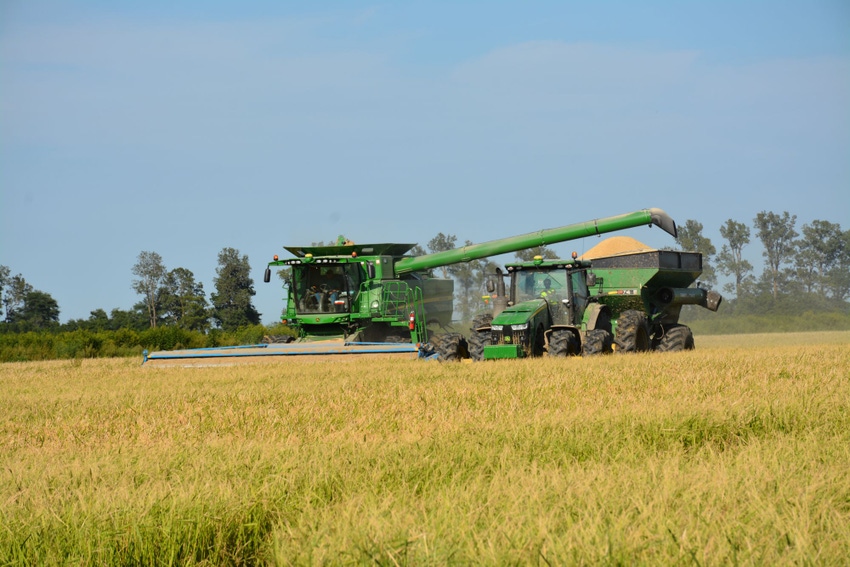
Hurricane and Tropical Storm Harvey will impact final U.S. long grain rice production figures, but too early for me to speculate.
Economic crosscurrents: The bullish bias remains in the U.S. long grain rice market, even as global economic crosscurrents related to currencies, bonds, equities and commodities are rebalancing markets.
Government intervention: Globally, governments and Central Banks through their fiscal, monetary, trade, regulatory, exchange rate and geopolitical policies have reasonably stabilized our domestic and global economic setting in 2017 to date.
Domestic and global rice fundamentals coupled with these policy intervention activities have benefitted the U.S. long grain rice sector.
Recession avoided: The U.S. and global economic, market, policy and regulatory events this year have unfolded in a manner that has allowed the U.S. to not only avoid a near-term recession, but through policy intervention pushed a potential U.S. recession and global economic slowdown possibly two-plus years into the future. Given fundamentals, today’s domestic and global rice market would have not fared well with a significant global deceleration in economic activity.
China’s credit crisis has weighed heavy on global markets in 2017, especially commodity markets, but the crisis now appears to be manageable given aggressive Chinese and global financial engineering. China’s ability to remain economically stable in 2017 is a major accomplishment of the top Chinese leadership and the Bank of China.
Dollar weakness: Many of the world’s currencies remain more bullish than bearish, allowing the U.S. and Chinese currencies room to weaken and re-energize their respective economies, which is a plus for U.S. long grain rice exports.
Bond Market: The U.S. 10-Year Treasury Yield is presently trading in a range of 2.1 to 2.4, which given domestic and global economic fundamentals is friendly to domestic and global economic growth, and many commodity markets including rice.
Slow Growth: Chronic slow domestic and global growth appear to be ever so slowly fading away due to fiscal and monetary policy intervention activities, which, in turn, provides incentive to expand commodity trade.
Equities: U.S. and global equity markets have some potential price consolidation or weakness over the next one to two months. The question becomes what’s the near-term impact on cotton, grain and rice markets? We simply must cautiously work our way through the next couple of months.
Thus, the domestic and global rice fundamentals, including unfolding events associated with Hurricane and Tropical Storm Harvey, coupled with an array of domestic and global government and Central Bank intervention activities, continue to give rice a bullish bias to date.
2017/18 World Rice Supply and Demand
World Rice-Cliff Note Version
2017/18 world rice acreage at 161.8 million hectares is slightly below last month’s 161.9, but still the highest on record
World rice yield at 4.4 metric tons per hectare is below 2016/17 period’s 4.5, but consistent with previous six periods
World rice rough production at 719.9 million metric tons is 1.8 million metric tons below 2016/17 and the 2nd highest on record
World rice milled production is the 2nd highest on record at 482.6 million metric tons
World trade at 43.9 million metric tons is the 3nd highest on record, which, in-part, reflects global uncertainties
World rice total use at 479.1 million metric tons is the 2nd highest on record only exceeded by the previous marketing period’s 480.3 million tons
World rice ending stocks continue to build at 122.9 million metric tons, which is the highest since 2001/02
USDA Long Grain Rice Supply and Demand -- Cliff Note Version:
The long grain rice season-average farm price range is forecast at $11.50 - $12.50 per cwt or $5.18 - $5.63 per bushel
2017 long grain rice planted acres are estimated at 1.909 million acres or 22 percent below 2016
5-year average 2,044,400 acres
10-year average 2,150,600 acres
15-year average 2,229,267 acres
2017-18 long grain rice beginning stocks are estimated at 31.3 million cwt.
Previous 5-year average was 22 million cwt.
Previous 10-year average was 24 million cwt.
2017/18 long grain rice production is estimated at 132.4 million cwt
5 percent below 2016-17
5-year average 148 million cwt
10-year average 149 million cwt
2017-18 long grain rice production is estimated at 132.4 million cwt
5 percent below 2016-17
5-year average 148 million cwt
10-year average 149 million cwt
2017-18 long grain rice total supply is estimated at 184.7 million cwt.
12-percent below 2016-17
5-year average 190 million cwt.
10-year average 191 million cwt.
2017/18 long grain rice domestic and residual use is estimated at 90 million cwt,
9th largest on record
5-year average 95 million cwt.
10-year average 94.5 million cwt.
2017-18 long grain rice total exports is estimated at 77 million cwt,
1 million cwt. below last year
5-year average 72
10-year average 73
2017-18 long grain rice total use is estimated at 167 million cwt.
11 million cwt below 2016-17
5-year average 166.7 million cwt.
10-year average 167 million cwt.
2017-18 long grain rice ending stocks are estimated at 17.7 million cwt.
5-percent below 2016-17, 2nd lowest in the previous 13 marketing periods
5-year average 23 million cwt.
10-year average 24 million cwt.
To view the accompanying Rice Outlook U.S. and World Slide Show, click on the download button that follows this article.
Bobby Coats is a professor in the Department of Agricultural Economics and Agribusiness, Division of Agriculture, University of Arkansas System. E-mail: [email protected].
DISCLAIMER-FOR-EDUCATIONAL-PURPOSES
About the Author(s)
You May Also Like




